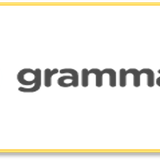Intensi Membeli, Jenis Kelamin, Gender Produk, Dan Tujuan Konsumsi
DOI:
https://doi.org/10.24912/je.v24i3.608Abstract
Penelitian ini dimaksudkan untuk menguji kaitan antara intensi konsumen untuk membeli produk dengan jenis kelamin, gender produk dan tujuan konsumsi. Subjek penelitian ini adalah 141 mahasiswa/i perguruan tinggi swasta di Jakarta. Intensi membeli diukur dengan skala Likert. Penelitian ini dilakukan dengan menggunakan desain deskriptif. Analisis yang digunakan adalah Anava (analisis variansi). Dari penelitian yang dilakukan diketahui bahwa intensi membeli produk berkaitan dengan jenis kelamin, warna dan bentuk produk, serta tujuan (manfaat) konsumsi. Peran tujuan konsumsi untuk memoderasi kaitan antara intensi membeli produk dan warna maupun bentuk produk tidak teruji secara empiris. Kontribusi penelitian ini berkaitan dengan penggunaan intensi membeli untuk dijelaskan melalui gender produk yang mungkin masih jarang diteliti.
References
Aritonang R., Lerbin R. (2018). Intensi membeli, gender, warna dan bentuk kemasan produk. Research report. Jakarta: LPPI Tarumanagara University.
Babolhavaeji, M., Vakilian, M. A. and Slambolchi, A. (2015). Color Preferences Based on Gender As a New Approach in Marketing. Andanced Social Humanities and Management, 2 (1), 35-44.
Beldad, A. and Hegner, S. (2018). Determinants of Fair Trade Product Purchase Intention of Dutch Consumers According To The Extended Theory of Planned Behaviour The Moderating Role of Gender. Journal of Consumer Policy, 41, 191–210.
Bracke, M. B. M., Koene, P., Estevez, I., Butterworth, A., and de Jong, I. C. (2019). Broiler Welfare Trade-Off: A Semi-Quantitative Welfare Assessment For Optimised Welfare Improvement Based On An Expert Survey. PLos One, 14 (10), 1-24.
Budruk, M., and Feldhaus, A. (2019). Understanding Place Meaning Through Integrative Research: Perspectives From The Natural Resource Social Sciences and The Humanities. Journal of Leisure Research, 50 (5), 461-478.
Caro-González, F.-J., Romero-Benabent, H. and Torné, I. S. (2017). The Influence of Gender on The Entrepreneurial Intentions of Journalism Students. Intangible Capital, 13 (2), 430-478.
Chen, C. Y., Lee, L., and Yap, A. J. (2017). Control Deprivation Motivates Acquisition of Utilitarian Products. Journal of Consumer Research, 43, 1031–1047.
Chinwong, D., Mookmanee, N., Chongpornchai, J., and Chinwong, S. (2018). A comparison of gender differences in smoking behaviors, intention to quit, and micotine dependence among Thai University Students. Journal of Addiction, 2018, 1-8.
Dalgin, H. M.; Sraihenn, A. and Okcay, O. (2018). Gender Differences in Product Color Importance, Color Choice, and Meaning Of Color: A cross-country study. Journal of Business and Behavioral Sciences, 30 (1), 88-99.
De Leeuw, A.; Valois, P.; Morin, J.A.S. and Schmidt, P. (2014). Gender Differences in Psychosocial Determinants of University Students’ Intentions To Buy Fair Trade Products. Journal of Consumer Policy, 37, 485–505.
Hess, A.C. and Melnyk, V. (2016). Pink or Blue? The Impact of Gender Cues on Brand Perceptions. European Journal of Marketing, 50 (9/10), 1550-1574.
Jones, C. L. E., Barney, C. and Farmer, A. (2018). Appreciating Anonymity: An Exploration of Embarrassing Products and the Power of Blending. Journal of Retailing, 94 (2) 186–202.
Lieven, T., Grohmann, B., Herrmann, A., Landwehr, J.R., van Tilburg, M., Lee, N. and Biswas, D. (2015). The Effect of Brand Design on Brand Gender Perceptions and Brand Preference. European Journal of Marketing, 49 (1/2)), 146-169.
Mouakket, S. (2018). The Role of Personality Traits in Motivating Users’ Continuance Intention Towards Facebook: Gender Differences. The Journal of High Technology Management Research, 29 (1), 124-140.
Neale, L., Robbie, R. and Martin, B. (2015). Gender Identity and Brand Incongruence: When in Doubt, Pursue Masculinity. Journal of StrategicMarketing, 24 (5), 1-13.
Nenkov, G. Y., and Scott, M. L. (2014). “So cute I could eat it up”: Priming Effects of Cute Products on Indulgent Consumption. Journal of Consumer Research, 41, 326–341.
Nesselhauf, L.; Deker, J. S. and Fleuchaus, R. (2017). Information and Involvement: The Influence on The Acceptance of Innovative Wine Packaging. International Journal of Wine Business Research, 29 (3), 285-298.
Pascual-Miguel, F.J., Agudo-Peregrina, Á.F. and Chaparro-Peláez, J. (2015). Influences of Gender and Product Type on Online Purchasing. Journal of Business Research, 68, 1550-1556.
Prado-León, L. R., Zambrano-Parado, P. L., Herrada-Rodríguez, S. and Felizardo-Gómez, S. (2018). Color Preferences For Private and Semi-Private Areas in Hotels. Universal Journal of Psychology 6 (4), 113-120.
Schnurr, Benedikt. (2018). What’s Best for whom? The Effect of Product Gender Depends on Positioning. European Journal of Marketing, 52 (1/2), 367-391.
Shephard, A., Pookulangara, S., Kinley, T.R. and Josiam, B.M. (2016). Media Influence, Fashion, and Shopping: A Gender Perspective. Journal of Fashion Marketing and Management: An International Journal, 20(1), 4-18.
Sweet, E. (2014). “Toys Are More Divided By Gender Now Than They Were 50 Years Ago,” The Atlantic, 09-Dec-2014. [Online]. Available: http://www.theatlantic.com/business/archive/2014/12/toys-are-more-divided-by-gender-now-than-they-were-50-years-ago/383556/. [Accessed: 14-Sep-2016].
Van Tilburg, M., Lieven, T., Herrmann, A. and Townsend, C. (2015). Beyond ‘Pink it and Shrink it’ Perceived Product Gender, Aesthetics, and Product Evaluation. Psychology & Marketing, 32 (4), 422-437.
Downloads
Published
How to Cite
Issue
Section
License
Copyright (c) 2020 Jurnal Ekonomi

This work is licensed under a Creative Commons Attribution-NonCommercial-ShareAlike 4.0 International License.
This journal provides immediate open access to its content on the principle that making research freely available to the public supports a greater global exchange of knowledge.

This work is licensed under a Creative Commons Attribution-NonCommercial-ShareAlike 4.0 International License.
Similar Articles
- Ryan Rahmah Maulayati, Najiatun, Muhammad Sanusi, Sri Herianingrum, Analisa Kinerja Keuangan Bank Muamalat Syariah Di Indonesia , Jurnal Ekonomi: Vol. 25 No. 1 (2020): March 2020
You may also start an advanced similarity search for this article.


















